Process
Better Software Magazine Articles
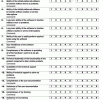 |
Customer Satisfaction: What to Ask, How to Ask, and Who to Ask Improving customer satisfaction should be a primary goal of process improvement programs. So how satisfied are our customers? One of the best ways to find out is to ask them. Here are techniques for creating a useful survey and interpreting the results. |
Linda Westfall
June 26, 2002 |
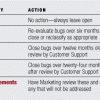 |
Organize Your Problem Tracking System Do you have a bug database or defect tracking system? Whether you call them PRs, CRs, SPRs, or some other acronym, logging your software problems into a database rates as one of the simplest yet most effective things you can do to improve product quality. Sometimes these databases turn into the electronic equivalent of a “roach motel” trap--the bugs go in but they don’t come out! |
Barry Mirrer
June 26, 2002 |
|
The Quality Barometer A QA manager is often faced with measuring the impossible. Here is a simple, post-ship metric to help judge the test effort's effectiveness. The Quality Barometer method uses the bug counts found during testing, calculates a percentage, and then uses that percentage as the defect target number that can be tolerated after shipment. |
George Hamblen
June 26, 2002 |
|
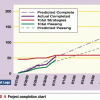 |
Perspectives from a Test Manager: Four Keys to Keeping Your Testing on Track This article highlights four keys to getting better organized: 1. A common set of ground rules on the test progress, defect reporting, and verification; 2. The ability to convey how your team’s testing is going--on a frequent basis; 3. Knowing what needs to be tested--and being able to stand behind the reasons why; 4. Maintaining good communication with the development leaders to help move the product through the development phases--being proactive rather than reactive. |
|
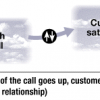 |
Designing Useful Metrics: Using Observation, Modeling, and Measurement to Make Decisions First-order measurement can help you understand what's going on, make decisions, and improve results. Observation, modeling, and simple data gathering are things that you can implement in your work group without a big measurement program or big funding. Start by modeling your system and working out on paper how different measures will affect your system. Then involve your team, expand your model, and try some simple data gathering. This approach to measurement is one more tool in your toolkit, and it will move your organization toward better quality. |
|
|
The Influential Test Manager: How to Develop and Use Influence to Help Your Test Group - and Project - Succeed Test managers often feel that while somebody might be in control of schedules or resources, they certainly are not. An experienced test manager shares ways to develop and use professional influence to help the test group. |
||
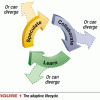 |
Retiring Lifecycle Dinosaurs: Adaptive Software Development Adaptive Software Development (ASD) is one of a growing number of alternatives to traditional, process-centric software management methods. Extreme Programming (XP), Lean Development, SCRUM, and Crystal Light methods—although different in many respects—are tied together by a focus on people, results, minimal methods, and maximum collaboration. They are geared to the high speed and high change of today's e-business projects. |
Jim Highsmith
June 26, 2002 |
|
Cem Kaner on Rethinking Software Metrics The theory underlying a measurement must take into account at least nine factors. This article defines these nine factors (e.g., the scope of the measurement, the scale of the instrument, and the variation of measurements made with the instrument) and applies them to a few examples. |
Cem Kaner
June 26, 2002 |





